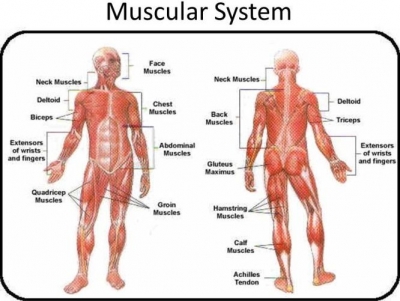
MUSCLES
Every body movement, whether it’s a leap in the air, a wink of the eve, a rumbling stomach, or a rapid heartbeat, is produced by muscles. Skeletal muscles are attached to bones of the skeleton, which they pull to move us around. Smooth muscle moves food along the intestine. Cardiac muscle keeps the heart pumping. All muscles are made of cells called fibres that contract (get shorter) to produce a pulling force.
- SKELETAL MUSCLE Long, cylindrical muscle fibres run in parallel and can reach up to 30 cm (1 ft) in length. They are bundled together to form muscles that are attached to bones by strong cords called tendons. Skeletal muscles move the body when instructed by the nervous system.
- SMOOTH MUSCLE Tightly packed into layered sheets, smooth muscle fibres are found in the walls of hollow organs, such as the small intestine, along which they push food, and the bladder, from which they expel urine. Smooth muscle contracts slowly and cannot be controlled voluntarily.
- CARDIAC MUSCLE Found solely in the wall of the heart, cardiac muscle fibres form a branching network that contracts automatically, without stopping or tiring, to pump blood around the body. Stimulation by the nervous system increases or decreases heart rate according to the body’s demands.
FRONT MUSCLES Skeletal muscles are arranged in overlapping layers, with surface muscles covering those deeper down. Muscles at the front of the body produce facial expressions, move the head forwards and to the side, move the arms forwards and bend them at the elbow, bend the body forwards and to the side, bend the legs at the hip, straighten the knees, and lift the feet upwards.
REAR MUSCLES All muscles are given Latin names that describe their size, location, shape, action, or other feature. Working downwards from head to feet, skeletal muscles at the rear of the body keep the head upright; steady the shoulders, keep the back upright to maintain posture, pull the arms backwards and straighten them, straighten the thighs at the hip, bend the knees, and point the toes downwards.
Picture Credit : Google




